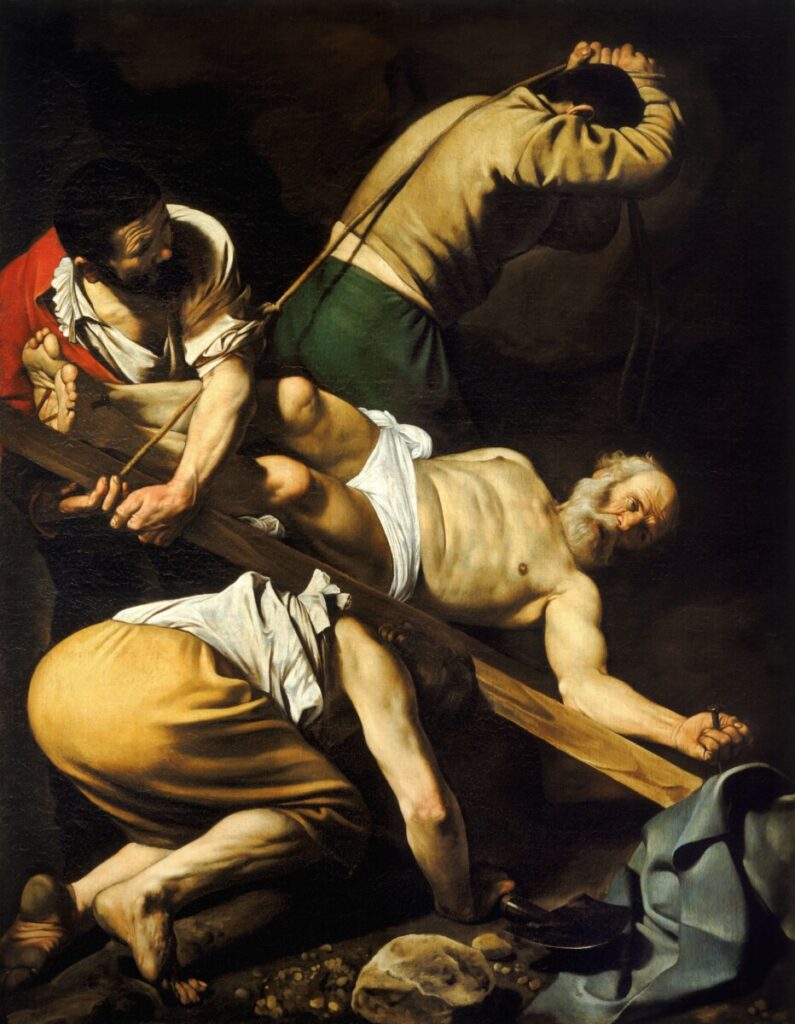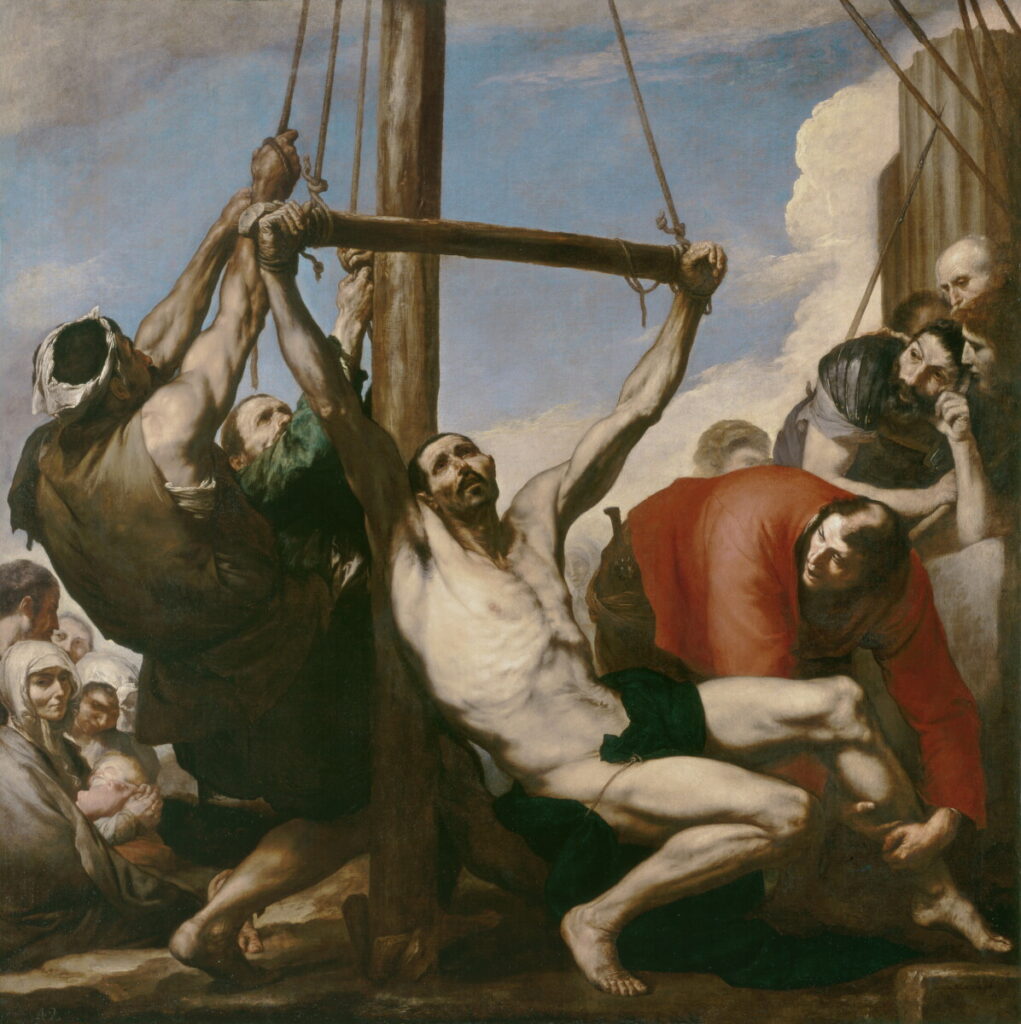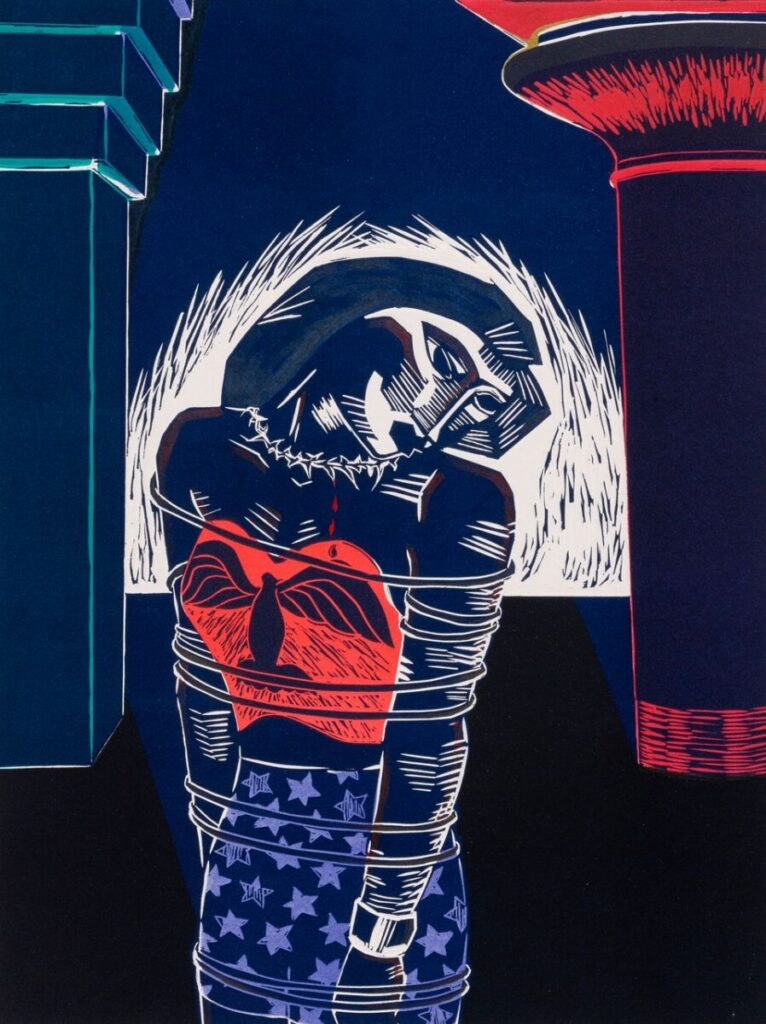Here is the link to my digital tool: https://storymaps.arcgis.com/stories/2f3936348dad4e05b2f9704028c4fecd
The martyrdom scene in Spanish Baroque art was significantly shaped and transformed by global influences. Through its distinct style and religious themes, Spanish Baroque art played a critical role in the development of Baroque art on a global scale, inspiring artists and influencing artistic styles in other countries. This movement in Spain was characterized by its grandeur, vividness, emotional intensity, and a tendency to dissolve the boundaries between various art forms, resulting in a unique expression that transcended national borders.
While Baroque art was embraced in Spain, it was not universally popular. In some areas of Europe, such as England, the Baroque style was seen as too ornate and over-the-top. However, in other areas, such as Italy, Baroque art was highly regarded and had a significant influence on later artistic movements. As such, many Spanish artists, like Jusepe de Ribera’s painting style, were heavily influenced by an Italian artist called Michelangelo Merisi da Caravaggio.
The Crucifixion of Saint Peter, Michelangelo Merisi da Caravaggio

The Crucifixion of Saint Peter was a painting created by Michelangelo Merisi da Caravaggio and depicts how Saint Peter was crucified in Rome. In this painting, we could see how Ribera was influenced by Caravaggio’s style. In The Crucifixion of Saint Peter, Caravaggio uses chiaroscuro to highlight Saint Peter and the executioner. In addition, it also emphasizes the process of the crucifixion. In the painting, Saint Peter’s left hand and both of his feet were nailed to the cross and they were bleeding. Three executioners are trying to drag him up and crucify him in an upside-down position. Instead of paying attention to the executioner’s facial expression, Caravaggio chose to add more subtle details on their body and their behavior. The executioner in yellow, staying at the bottom of the cross, is holding a shovel in his hand. The executioner in green is holding the rope with his back arched, trying to tie Saint Peter upside down. The executioner in red is holding Saint Peter’s feet and helping the executioner in green. With these blurry facial expressions but clear body language, Caravaggio shifts the tension of the painting to Saint Peter and his facial expression. In the painting, Saint Peter is looking toward the right, with his lost-looking eyes, which emphasizes his helplessness, pain, and more importantly, his faith in Christ.
Spanish Art Movement
The Spanish Baroque art movement emerged in the early 17th century, at a time when Spain was a global superpower with a vast empire spanning the globe. The art was deeply rooted in religious themes, reflecting the strong influence of the Catholic Church in Spain at the time.
“One of the Spanish Baroque style’s most notable characteristics is the tendency to blur the lines between various art genres. Paintings frequently used aspects from sculpture, architecture, and other artistic genres to produce a feeling of coherence and harmony throughout many works.”
The style was also heavily influenced by global trends and developments, with artists drawing inspiration from Italian and Flemish art, as well as the Baroque style that was emerging in other countries around the world.
Jusepe de Ribera
Jusepe de Ribera is regarded as one of the major artists of Spanish Baroque painting. He created history paintings with traditional Biblical subjects and is perhaps best known for his works on martyrdom scenes. Jusepe de Ribera was originally inspired by Caravaggio in his early life, but later moved to Naples and died due to chronic illness. (Brown Jusepe de Ribera Prints and Drawings)
The Martyrdom of Saint Bartholomew, Jusepe de Ribera

The Martyrdom of Saint Bartholomew is a painting that tells the story of the apostle Bartholomew’s gruesome martyrdom. “According to Christian tradition, Bartholomew was an apostle of Jesus who traveled to India to preach the gospel. Saint Bartholomew worked several miracles while he was there, winning many people over to Christianity. However, the local authorities, who were opposed to Christianity, became aware of his achievement.” (Jacobus and Ryan, Golden Legend – readings on the saints) The painting follows the text by Jacobus de Voragine in the ‘Golden Legend’ and illustrates the martyrdom and physical torment that Saint Bartholomew has experienced. Ribera’s rendition of the subject is unique in its depiction of the intense emotional and physical suffering of the saint and reflects the idea of realism during the Baroque period.
At the bottom left corner, there is a “classical sculpture on the ground, which has been identified as the god Baldach.” (Zaidan 01 works, religious art – interpretation the Bible, with footnotes – 112) The executioner on the left of the painting tied Saint Bartholomew to a tree. While the other executioner on the right of the painting, with a knife in his hand, is flaying Saint Bartholomew alive. Ribera painted this executioner with a smiling face and blush on his face, which corresponds to what was written in the Golden Legend that a sadistic drunken executioner delightfully flayed him alive. Other than this, there are two priests behind the drunk executioner, with their heads covered, who witnessed the torture of Saint Bartholomew.
In Ribera’s painting, Ribera painted Saint Bartholomew’s final moment before he was flayed alive with his arms outstretched in a cruciform position. Moreover, Saint Bartholomew’s upturned face with his widely opened eyes looking upwards, pale skin, and opened mouth not only symbolizes the excruciating pain he is experiencing but also symbolizes his unwavering faith and devotion to Christ.
The Martyrdom of Saint Philip, Jusepe de Ribera

Another similar painting created by Jusepe de Ribera’s painting is called The Martyrdom of Saint Philip. The painting depicts the preparation for Saint Philip’s crucifixion. It is a powerful representation of the violence and suffering that Saint Philip endured for his faith in god.
In the center of the painting, Saint Philip’s arms are outreached and his legs are bent. His eyes, just like Saint Bartholomew, are looking upwards. In Saint Philip’s eyes, we could see his faith in God and his acceptance of his fate. In the painting, there is a group of executioners surrounding Saint Philip. On the right, there is an executioner with a red jacket holding Saint Philip’s leg. On the left, there are two executioners, one with brown clothes and the other with green clothes, tying him up and getting ready for the crucifixion. In the background, people are watching the crucifixion. Ribera emphasizes the lady with a kid in her arms (left) and the couples who are whispering (right) in the crowd. Interestingly, it creates a clear comparison with their facial expressions. The lady on the left of the painting obviously knows that Saint Philips is going to be crucified and she looks solemn. However, on the other side of the painting, the couples are whispering as if they know nothing. Both paintings use chiaroscuro to highlight the apostle’s pale body to emphasize the physical pain of being crucified and flayed alive. In addition, by giving prominence to the executioner and the witness’s facial expressions, Ribera reinforces the idea of realism and adds more emotional impact to the painting.
Social, Political, and Religious Purpose of Ribera’s painting
During this period, the Catholic Church was a dominant force in Spanish society while the Catholic Revival was going on. By portraying Saint Bartholomew and Saint Philip as martyrs, Ribera praises their faith in god. “As a common subject in baroque art, churches employ Martyrdom scenes to reinforce the power of the Church, promote devotion, and allow people to think about the enduring power of devotion.” (Bray et al. The sacred made real: Spanish painting and sculpture 1600-1700) Thinking about the paintings worldwide, Saint Bartholomew and Saint Philip symbolize widespread Christianity during that time period. In addition, as the major world power in the Baroque era, Spanish rulers sought to use art as a tool to show the world their wealth and status. Ribera’s painting, with its opulent details and powerful composition, was likely commissioned by the Spanish court as a way of celebrating its own power and influence.
Compare and Contrast Ribera and Caravaggio’s work
Although Ribera developed his own painting style in his late life, we could still find the shadow of Caravaggio’s work in Ribera’s painting. Similar to Caravagio’s work, Ribera uses chiaroscuro to highlight the apostles and the process of martyrdom. In the Crucifixion of Saint Peter, Saint Peter was hanging upside down with his arms outstretched, just like how Ribera depicts Saint Bartholomew’s body in The Martyrdom of Saint Bartholomew. In both The Crucifixion of Saint Peter and The Martyrdom of Saint Philip, the executioners had similar clothing and were both trying to crucify the Saints. Different from how Caravaggio painted Saint Peter’s eyes with a lost look, Ribera painted both Saint Bartholomew and Saint Philip with upward-looking eyes. Although all of these represent their faith in god, the way Ribera and Caravaggio express the emotional impact of the painting is different. In Ribera’s painting, he emphasizes the idea of realism and physical pain by having witnesses in the background. While in Caravaggio’s work, he simply emphasizes the theme of “crucifixion” itself.
How Jusepe de Ribera influences other artists’ style on Martyrdom scene

As one of the most influential Spanish artists, Jusepe de Ribera also influences other artists like Mattia Preti when they are creating Martyrdom scenes in their works. In Preti’s work The Martyrdom of Saint Bartholomew, he depicts Saint Bartholomew as a helpless man who was tied to a wooden post being flayed alive. Similarly to Ribera, Saint Bartholomew painted by Preti has his eyes widely opened and looks upwards to the sky. By applying a similar chiaroscuro as Jusepe de Ribera, Preti highlights how brutal the executioner is and how helpless Saint Bartholomew is to emphasize the physical torture and violent intensity, and evokes strong emotion.
Contemporary Martyrdom scenes

Nowadays, Martyrdom scenes are not as common as they were in the Baroque period; however, they still appear in contemporary artworks. As arts are developing, it also gives the word “Martyrdom” a broader idea. Martyrdom is not only the physical suffering and sacrifice for religious beliefs but also includes ideas of gender equality, racism, and other social issues. Just like Frances Myers’s work The Martyrdom, the main character, and the only character was a lady who was tied, looking downwards, and suffering. This not only represents the idea of martyrdom but also symbolizes the unfair treatment women received from society.
In conclusion, the Martyrdom scenes in the Spanish Baroque art movement played a significant role in the development of art history. Artists like Jusepe de Ribera were instrumental in shaping the martyrdom scene in Spanish Baroque art and inspiring artists globally over time.
Work Cited
Jacobus, De Voragine, and William Granger Ryan. Golden Legend – Readings on the Saints. The University Press Group Ltd, 2012.
Bray, Xavier, et al. The Sacred Made Real: Spanish Painting and Sculpture 1600-1700. National Gallery, 2009.
Brown, Jonathan. Jusepe de Ribera: Prints and Drawings. Princeton: Princeton University Press, 1973
Zaidan, Henry. “01 Works, Religious Art – Interpretation the Bible, with Footnotes – 112.” 01 Works, RELIGIOUS ART – Interpretation the Bible, With Footnotes – 112, 3 Mar. 2019, https://painting-mythology.blogspot.com/2019/03/01-works-religious-art-interpretation_22.html.
Myers, Frances. “The Martyrdom, from the Portfolio Point of Departure.” Smithsonian American Art Museum, 1984, https://americanart.si.edu/artwork/martyrdom-portfolio-point-departure-18145.
Preti, Mattia. “File:the Martyrdom of St. Bartholomew – Mattia Preti – Google Cultural …” Wikimedia, 1660, https://commons.wikimedia.org/wiki/File:The_Martyrdom_of_St.Bartholomew–Mattia_Preti-_Google_Cultural_Institute.jpg.
Caravaggio, Michelangelo. “File:Caravaggio-Crucifixion of Peter.jpg – Wikimedia Commons.” Wikimedia, 1600, https://commons.wikimedia.org/wiki/File:Caravaggio-Crucifixion_of_Peter.jpg.
Ribera, Jusepe de. “File:Martyrdom of Saint Bartholomew by Gioacchino … – Wikimedia Commons.” Wikimedia, 1644, https://commons.wikimedia.org/wiki/File:Martyrdom_of_Saint_Bartholomew_by_Gioacchino_Assereto,1630_AD,_oil_on_canvas–Accademia_Ligustica_di_Belle_Arti-_DSC02125.JPG.
Ribera, Jusepe de. “Category:Martyrdom of Saint Philip by Ribera.” Wikimedia Commons, 1639, https://commons.wikimedia.org/wiki/Category%3AMartyrdom_of_Saint_Philip_by_Ribera#/media/File:Joséde_Ribera–Martyrdom_of_St_Philip-_WGA19360.jpg.
